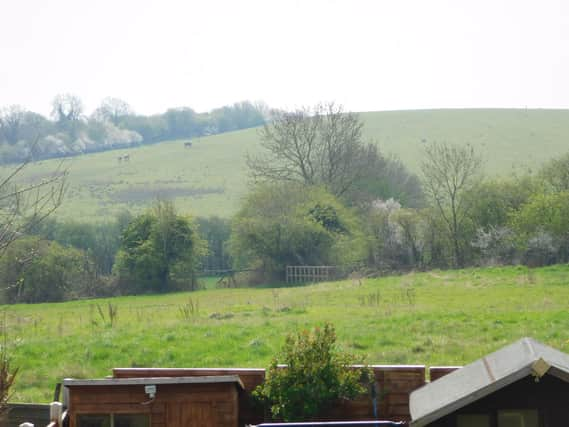Plans to build 200 homes on toxic Derbyshire landfill site set for final approval


Avant Homes wants to build 200 homes on land called Nether Farm off Birchwood Lane in Somercotes, which has been the subject of extensive legal battles and arguments over contamination.
The developer wants to build a £47 million housing site on the plot despite the already acknowledged need to build homes on suspended floors with membranes able to suppress harmful substances from entering the planned properties.
Advertisement
Hide AdAdvertisement
Hide AdThis is due to the site’s vicinity to the historic toxic landfill LS01, among other landfills, from which contamination has been found to be leaching in reports submitted by housing developers.
Earlier this year, residents claimed in a public council meeting that numerous people in Somercotes were falling ill due to work in housing developments next to historic landfill sites.
This included homes close to the Nether Farm site and also homes around the 180-home Stanley Street site.
Stanley Street received its reserved matters (final planning details) approval under delegated powers, instead of via the council planning committee, in May.
Advertisement
Hide AdAdvertisement
Hide AdAmber Valley Borough Council planners have recommended that the plans are approved at a meeting on Monday, September 11.
The site would have 60 homes classed as affordable housing (45 rented and 15 shared ownership) and properties on the site would range from two-bed homes to four-bed homes.
A total of 26 objection letters have been submitted by residents, along with Somercotes Parish Council and opposition from Cllr John McCabe, local ward member.
These letters and objections focus on contamination on the site, road safety on routes past and throughout the area, pressure infrastructure and reduction in privacy in existing homes.
Advertisement
Hide AdAdvertisement
Hide AdObjections include: “The extent and intensity of contaminant status beneath the site and the risk it poses to future occupiers and existing residents is unknown.
“Contamination was found on the site which is from the LS01 hazardous landfill and has progressed 300 metres from the source."
Outline plans for 200 homes were reapproved on the site in June 2021 after years of controversy and a High Court battle linked to an initial approval in 2018 and contamination concerns.
Council officers recommending approval for the reserved matters application, tying up the final details of the site, wrote: “Concerns with regards to contamination have been addressed as part of the outline planning application permission which includes a number of conditions, which specifically deal with contamination.”
Advertisement
Hide AdAdvertisement
Hide AdIt was claimed during June’s cabinet meeting that work to install a grout wall on the Stanley Street site, including a period of deep drilling and the pouring of concrete into old mine networks, had displaced harmful substances.The site owner vehemently denied there was any connection saying after being examined by experts that “we are satisfied that it is suitable for residential development”.
The UKSHA claimed, following an investigation of one case referred to it, that “it is extremely unlikely that environmental toxins were the cause of any illness reported”.
However, some residents dubbed the building of homes next to historic landfills “lunacy” and “absolute madness”.